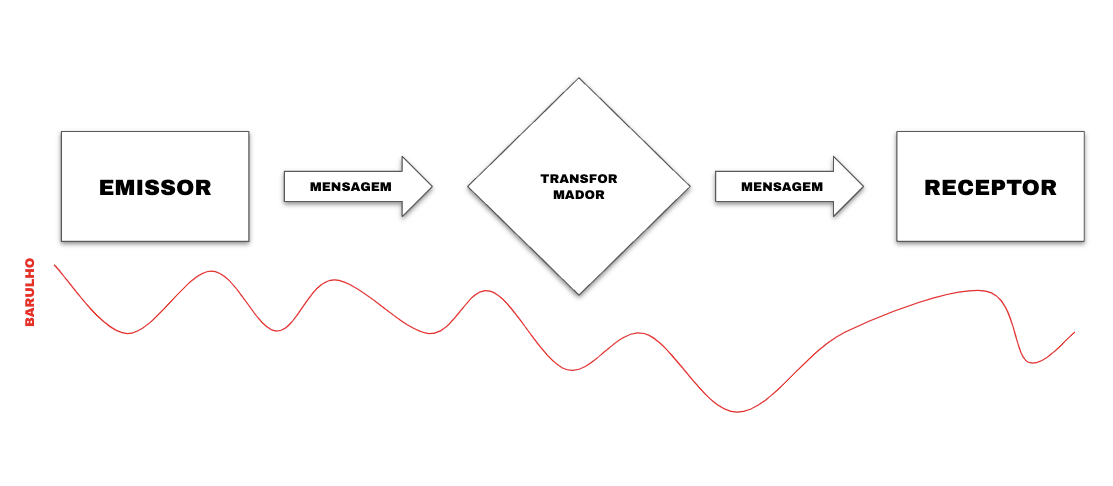
Fundamentals of organizational communication when working remotely » Portal Insights
Follow Us @
Fundamentals of organizational communication when working remotely » Portal Insights
-Trending Marketing news, content marketing, latest Ways to rank your website, marketing discoveries, Local SEO, seo and social media marketing services. enjoy your stay on our website.
It's curious how human beings can be true masters of communication on a daily basis with friends and family, but terrible in the corporate context.
It seems that all the skills we use to communicate in small groups simply don't work with larger groups of people, especially when different communication channels and styles are involved.
Who has never received a message on WhatsApp and needed a few minutes to be able to interpret what the person meant? Or did you discover, days later, that a colleague misunderstood what you meant and ended up doing unnecessary work?
There is no shortage of examples of communication failures in this regard. It is estimated that in the United States alone, companies lose more than 1 trillion dollars annually due to simple communication failures.
We could write thousands and thousands of lines about theories about why this happens – from Claude Shannon's information theory to Dunbar's number – but not only have far more qualified people done this throughout history, but such theoretical explanations are difficult to translate. for practical life.
Therefore, in this text I will give some tips to make the exchange of information within your company more fluid and take the opportunity to clarify that, contrary to what many people think, systematizing communication opens up space for the randomness necessary for serendipity within of companies.
How to develop an effective communication plan
First of all, we need to understand that all communication consists of some elements:
- Issuer: It is the one who sends the message and most needs to follow the communication plan. The responsibility for the quality of the message must always lie with the sender.
- Receiver: It is the person who receives the message and must transform it into some action – be it just responding, forwarding or planning a task based on the information received.
- Transformer: It is the medium through which the message will travel (technology). The less friction there is in a transform, the more agile the message.
- Message: This is the information that passes through this system. It is important to highlight that the message is not limited to text – it can be a video, an audio on WhatsApp or even a reaction on social media.
- Noise: It can happen at any time and the manager's role is to understand how to reduce it as much as possible. Common examples of noise are Portuguese errors, gibberish written texts, technical problems and wrong interpretations.


If this all seems too complicated, don't worry.
You just need to understand that when someone sends a message, that message is transformed by the medium in which it is sent so that the receiver can understand it.
Along this path, your message is subject to interference and losses (noise) and a good manager takes on the mission of effectively reducing them.
Knowing this, when developing a communication plan for your team, it is important to consider and determine these five elements, in a way that makes it clear to people how information should flow.
Asynchronous communication will change your life
A good practice that does not fit into any of the elements of a communication plan but certainly permeates it all is to adopt asynchronous communication for messages – especially on WhatsApp.
Do you know why you spend more time answering messages than doing what you are good at doing?
Because WhatsApp nowadays is nothing more than a to-do list where anyone with your number can put a task there.
And don't expect this to change… You're the one who will need to set this limit – as they say, if you don't prioritize your time, someone else will do it for you.

Some practical tips:
– Never work with a second screen with WhatsApp open (unless you work in customer service and response speed is your performance indicator).
– Respond in blocks throughout the day. Instead of responding in real time, as if it were a chat, let the messages accumulate for a certain amount of time (I do 2 hours) and then respond to everyone. Repeat the process 3x or 4x throughout the day.
– Be clear and objective in your answers, and demand that people do the same when asking questions – asynchronous communication is the soul of business and will change your life, believe me.
– Inform the most important people that, if there is any urgency, they can call you. This way you don't worry that something might be “on fire” and you aren't paying attention.
– You don’t need to force people not to send messages at certain times, but you can only respond at times when you are actually working – little by little they will understand this and everything will be fine.
Golden tip for communication in remote teams
We know that most of our communication is non-verbal – that is, we interpret people more through gestures. facial expressions and posture than by what they say.
Furthermore, in remote work we don't SEE what each person is doing.
In a physical office, if you ask someone to look for information and then you see them going to ask other people, you are aware that they heard you and are acting on it.
When working remotely, if you don't let them know that you're going to pick it up, whoever sent the message doesn't have that clarity, which can cause a series of confusion and anxiety in the team.
That's why it's important to ALWAYS give feedback. Even if it's a “thumbs up” on WhatsApp, instruct your team to always confirm that a message has been read and understood.
Relationship between communication and culture
It is impossible to talk about communication without taking into account the cultural elements of each group. After all, culture is nothing more than a set of behavioral patterns that characterize a certain group of people.
In practice, this means that there is no point in creating a communication plan determining that every message needs to be asynchronous. Culturally, people in your company are afraid of being direct to the point and appearing arrogant.
Another common example of misalignment is stating that feedback is welcome, but punishing (or even being reactive) when someone provides feedback that you don't agree with.
In situations like this, it remains to use common sense and knowledge about your team to determine whether the communication plan will be a driver for culture change or not – and if so, what type of support from key stakeholders the plan will receive in moments of resistance.
Like any other aspect of business, culture is built and maintained much more than what is written on the wall, but through actions and rituals.
Because systematizing communication in your company (if conducted correctly) will not kill the team's creativity
Looking at your company's communication in a more systematic way does not require completely eliminating chance – conversations in the hallway, exchanging ideas, happy hours….
Quite the opposite! Looking at communication this way allows your team to have time and energy to do things beyond operations.
Ideas are much more likely to emerge in environments where there is time (and mental health) to do so than in environments where everyone is, at all times, putting out fires.
As Jocko Willink, one of the most influential business and personal development influencers in the world, said, “discipline equals freedom”.
Fundamentals of organizational communication when working remotely » Portal Insights
Follow TODAYSGIST on Google News and receive alerts for the main trending SEO news, Ai news, latest Ways to rank your website, marketing discoveries, Local SEO and lots more!
Fundamentals of organizational communication when working remotely » Portal Insights
SHARE POST AND EARN REWARDS:
Did you like this post?!!! Join our Audience reward campaign and make money reading articles, shares, likes and comment >> Join reward Program
FIRST TIME REACTIONS:
Fundamentals of organizational communication when working remotely » Portal Insights
Be the first to leave us a comment, down the comment section. click allow to follow this topic and get firsthand daily updates.
JOIN US ON OUR SOCIAL MEDIA: << FACEBOOK >> | << WHATSAPP >> | << TELEGRAM >> | << TWITTER >
Fundamentals of organizational communication when working remotely » Portal Insights
#Fundamentals #organizational #communication #working #remotely #Portal #Insights
-

 usa today entertainment3 months ago
usa today entertainment3 months agoRed Eye (TV series 2024) Download Mp4 ▷ Todaysgist
-

 usa today entertainment3 months ago
usa today entertainment3 months agoLuxe Listings Toronto (TV series) Download Mp4 ▷ Todaysgist
-

 Cryptocurrency3 months ago
Cryptocurrency3 months agoPerpetrator Laundering Money Using Crypto Worth IDR 3.7 Trillion Caught in Hong Kong
-

 usa today entertainment3 months ago
usa today entertainment3 months agoHYBE Confirms There Was an Attempted Rebellion at ADOR, Says Gibah Min Hee Jin with Other Agency Officials
-

 Sports3 months ago
Sports3 months agoThe schedule for the rematch against Udinese is not favorable for AS Roma
-

 usa today entertainment3 months ago
usa today entertainment3 months agoBrigands The Quest For Gold (2024) (Italian) (TV series) Download Mp4 ▷ Todaysgist
-

 usa today entertainment3 months ago
usa today entertainment3 months agoMasterChef Junior (TV series) Download Mp4 ▷ Todaysgist
-

 Cryptocurrency3 months ago
Cryptocurrency3 months agoToday's Crypto Prices 30 April 2024: Bitcoin CS is on fire again


























